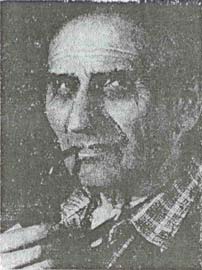 The Wind Tunnel in Polizu at the time of its inauguration represented one of the most advanced aerodynamic labs in the world. The tunnel was designed by Ion Stroescu (1888-1961), based on an original blue print, which included a patent and more innovations worldwide. Ion Stroescu was a sports teacher, but with a passion and a fascinating intuition for aerodynamics. Today, he is recognized as inventor and pioneer in experimental aerodynamics. He had built his first Wind Tunnel in 1927 at Râmnicu Sărat, in the sports room of the high school he was teaching.
The Wind Tunnel in Polizu at the time of its inauguration represented one of the most advanced aerodynamic labs in the world. The tunnel was designed by Ion Stroescu (1888-1961), based on an original blue print, which included a patent and more innovations worldwide. Ion Stroescu was a sports teacher, but with a passion and a fascinating intuition for aerodynamics. Today, he is recognized as inventor and pioneer in experimental aerodynamics. He had built his first Wind Tunnel in 1927 at Râmnicu Sărat, in the sports room of the high school he was teaching.
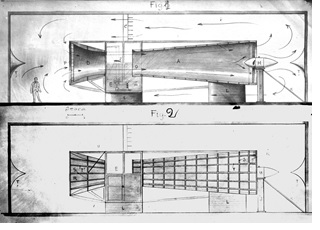
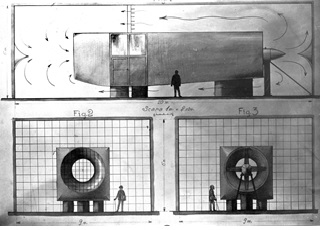
In the same year, he applies for two valuable patents, for controlling the boundary layer by injection-suction and blowing-out (patents 11.169/1925 and 13.677/1925 Ion Stroescu).
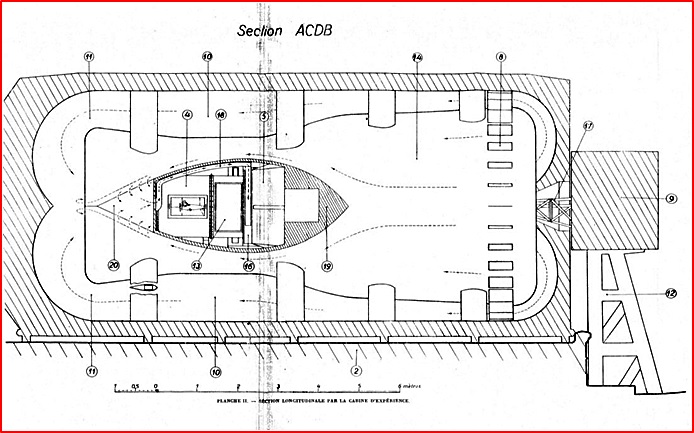
Illustrations show the blue prints of the Wind Tunnel in Râmnicu Sărat and photos during construction.
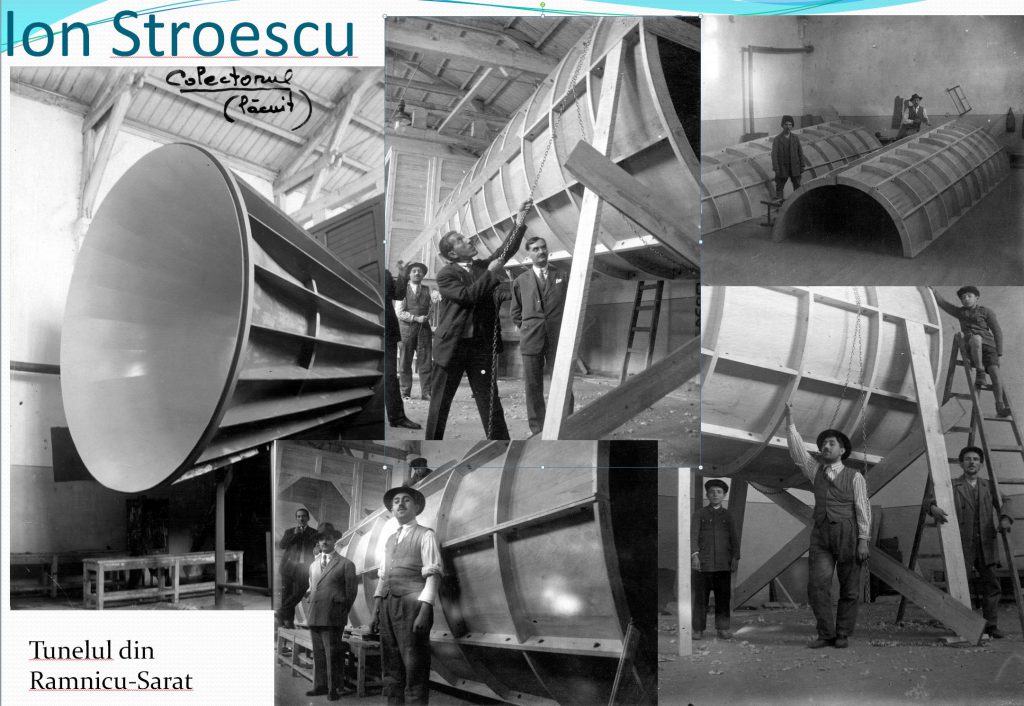
The new Wind Tunnel attracted Prof. Elie Carafoli’s attention, the well known Romanian aerodynamics expert, the founder of the aeronautical engineering school. He tried to stop the demolition of the tunnel, ordered by the Ministry because it ”abusively” occupied the sports room. He did not managed that, but managed instead to get an order for Ion Stroescu to be assigned at the Politechnical School.
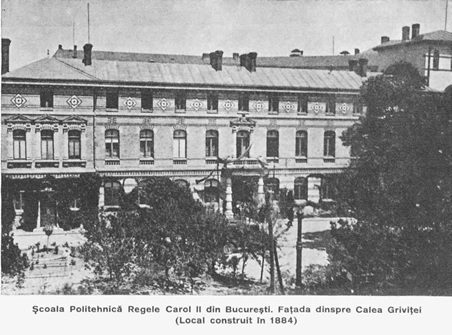
In 1929 Carafoli appointed Stroescu as assistant professor at the Department of Aerodyanmics. Under his supervision, Ion Stroescu designed and managed the works for the new Wind Tunnel of Polizu.
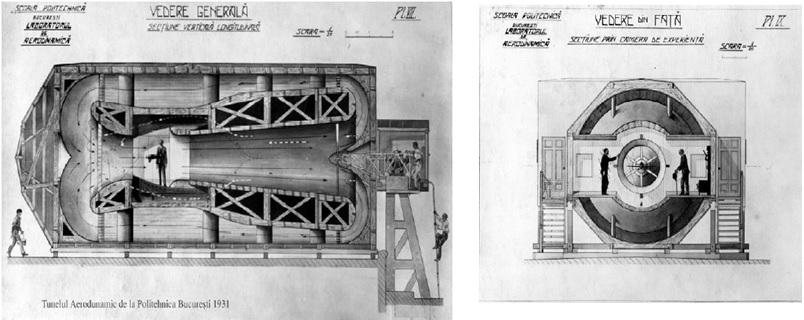
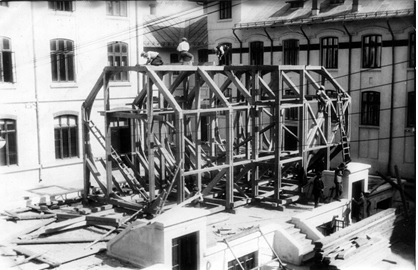
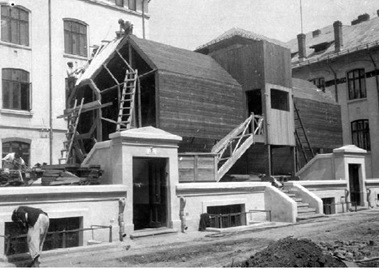
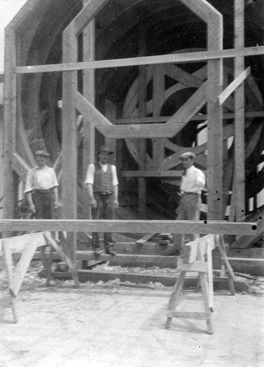
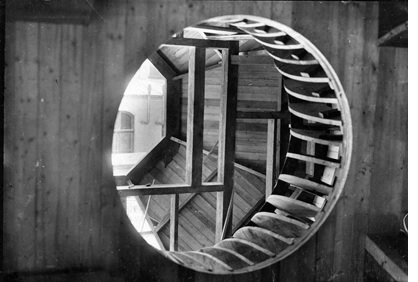
In the experimental section of the tunnel, the models of all Romanian airplanes were to be tested. The room was equipped with an aerodynamic strain cage, another invention, which demonstrate the creativity of the Romanian pioneers of aerodynamics.
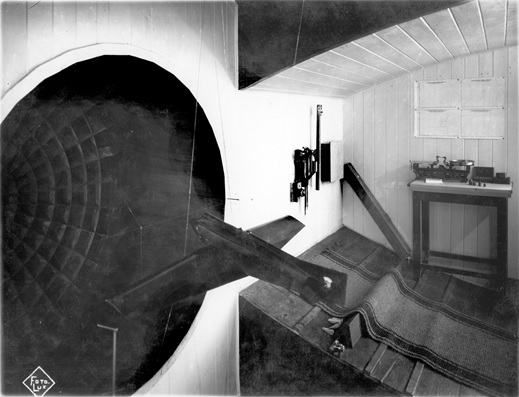
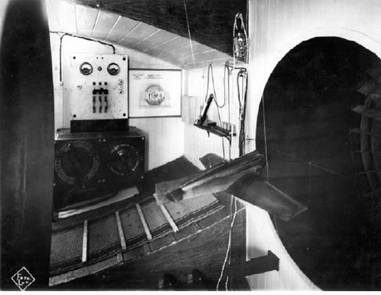
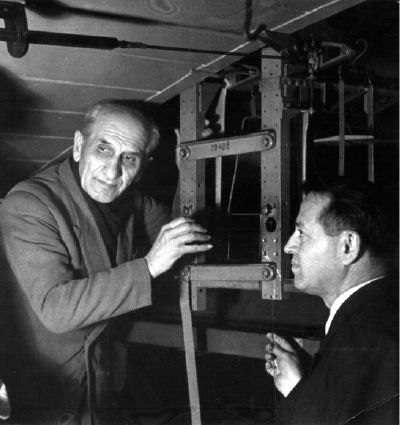
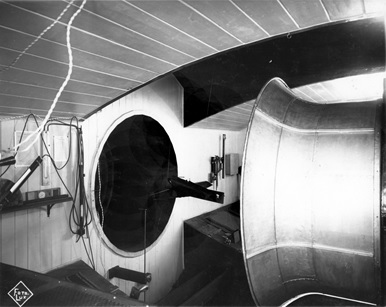
On 7 May 1931, King Carol the 2nd, together with Prince Nicolae, with Prime Minister Nicolae Iorga and with the Rector of the Politechnical School, Nicolae Vasilescu-Karpen inaugurate the most important Wind Tunnel in South-East Europe, and one of the most advanced and well equipped in Europe at the time.
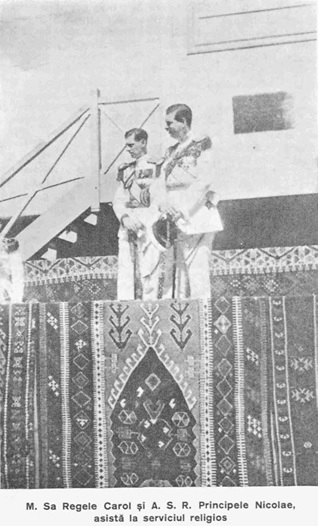
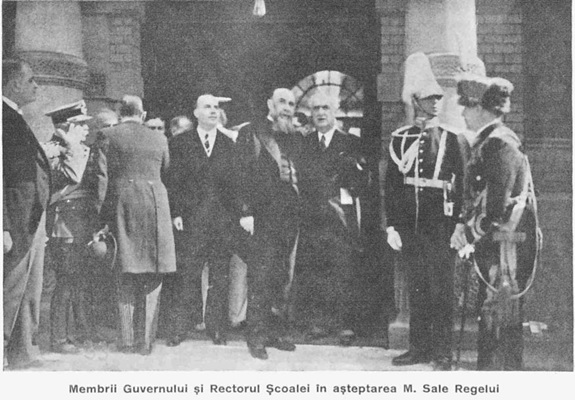
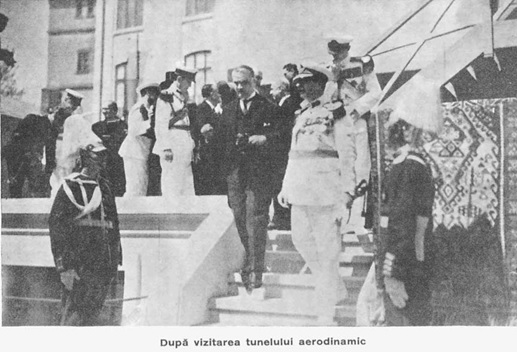
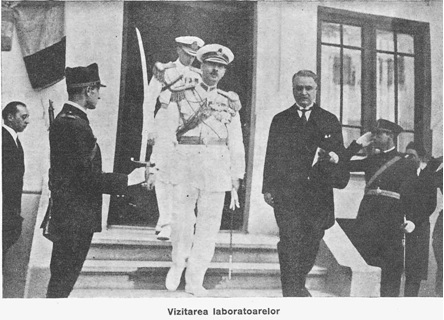
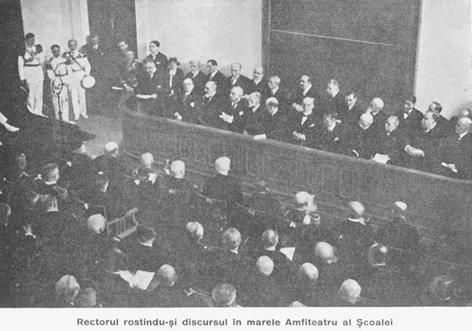
We may easily recognize the ”Grand Amphitheatre of the School”, currently known as the F024 Acad. Virgiliu N. Constantinescu Amphitheatre of the Faculty of Aerospace Engineering. The Wind Tunnel in Polizu contributed to the relative superiority of the Romanian aeronautical industry before and during WWII. Hundreds of new aircraft designs, wing airfoils and other parts could be tested. Some of the aircraft designed in this Wind Tunnel were matching the performance at the highest standards worldwide, competing with American, British or German aircraft.
In 1937 Ion Stroescu got another assignment, with the Faculty of Sciences of the University of Bucharest, by the Laboratory of Prof. Victor Vâlcovici, who was PhD in aerodynamics from the school of the well known scientist Ludwig Prandtl (1931).
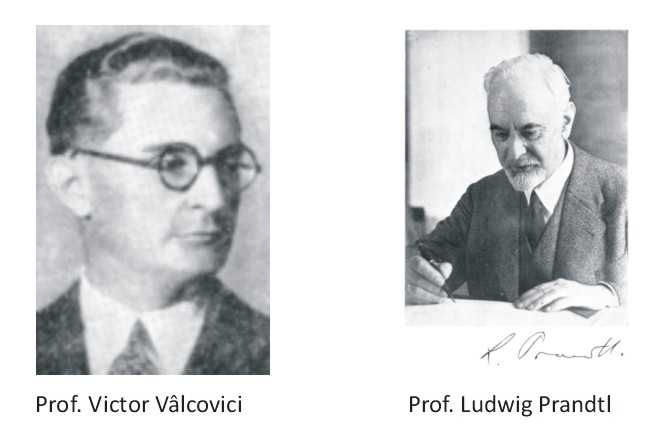
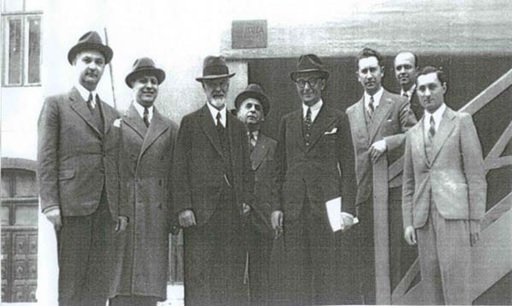
Ludwig Prandtl visited the Politechnical School in 1941, particularly to see the Wind Tunnel in Polizu. In the picture, from left to right: C.C. Teodorescu, Elie Carafoli, Ludwig Prandtl, Dionisie Germani, Victor Vâlcovici, Lucius Saveanu, Ion Cârstoiu and Nicolae Tipei.
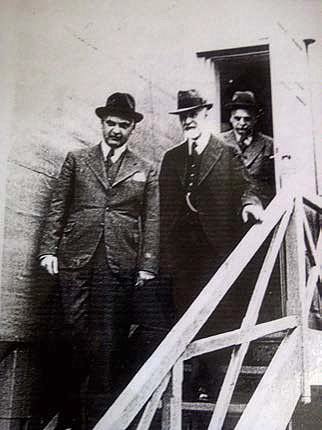
On the stairs of the tunnel, in this photo there are C. C. Teodorescu, Ludwig Prandtl and Dionisie Germani.
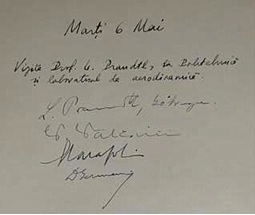
The experimental results at the end of an intense effort under the supervision of Prof. Vâlcovici, and later (after 1941) with the participation of the young mathematician Ion Șabac, the Wind Tunnel in Polizu and its creator Stroescu get an international recognition.
In 1943, Ion Stroescu’s presentation at the Research Academy in Berlin attracted appreciative remarks by Professors Ludwig Prandtl and A. Betz.
In 1946 at the Fourth Congress of Applied Mechanics, Ion Stroescu presents at Sorbone the paper “A New Type of Wind Tunnel”.
“Prof. Edmond Brun requested permission to use the blue prints of the Bucharest Wind Tunnel to build a similar one at Sorbone” (Prof. V. Vâlcovici).
In the years 2000-2008, under the supervision of Prof. Sterian Dănăilă, through significant financial efforts, the Wind Tunnel in Polizu was refurbished and modernized, becoming a valuable laboratory of aerodynamics. Very sensitive decisions were taken, trading off the preservation of the historical and patrimonial value, and the modernization of the laboratory to the 21st Century standards.
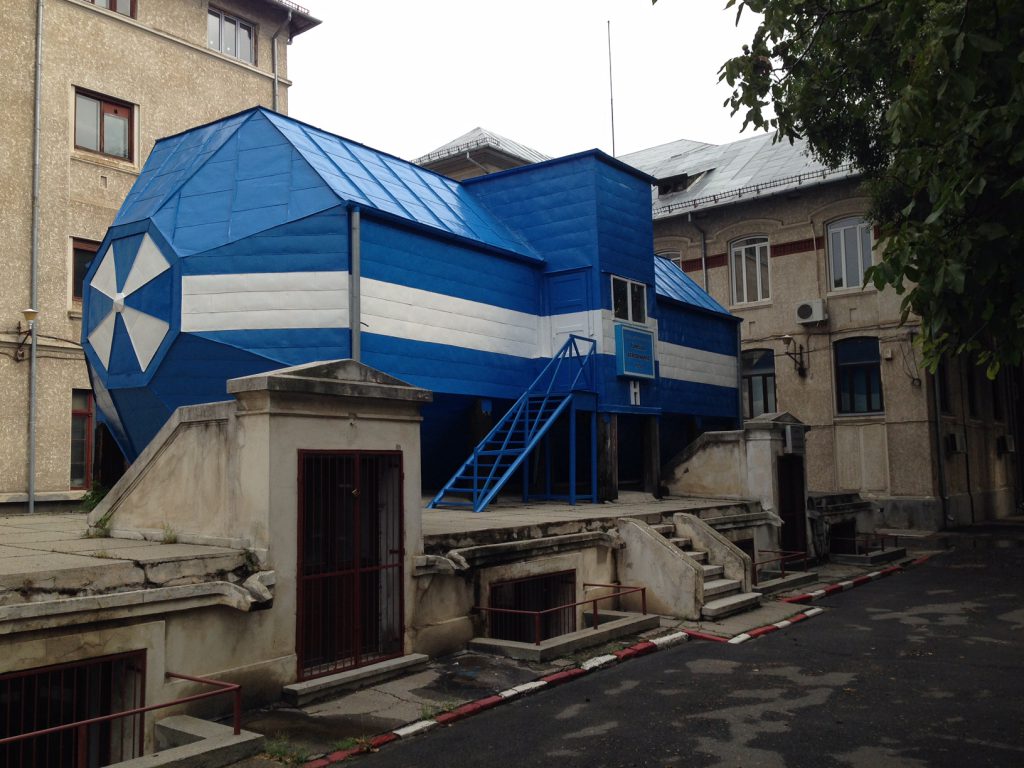
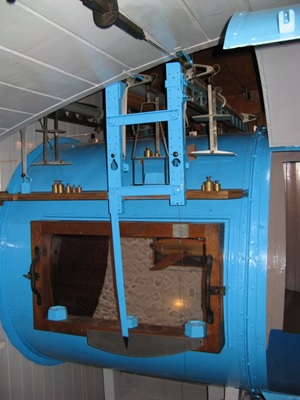
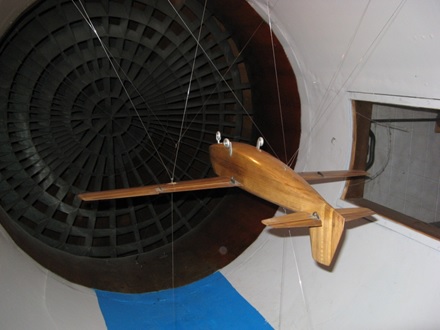
(This article was adapted after the presentations of Prof. Sterian Dănăilă, using original materials of the ”Elie Carafoli” Department of Aerospace Sciences, and using the paper of Conf. Nicolae Șerban Tomescu, ”An important achievement of Professor Ion Stroescu: the wind tunnel of the Polytechnic School of Bucharest” published in 2011 in the INCAS Bulletin. Another reference is the paper of Buiu V, Ion Stroescu (1888-1961) A Man and a Life –for a passion, INCAS BULLETIN, Volume 3, Special Issue/ 2011, pp. 1 – 15. A significant reference over the entire field is the book ”The History of the Higher Education in Aviation” by Prof. Virgil Stanciu)
Laura Gârdu
Post by: Mirabela Tiron Posted on 19 May 2014 Every day at work, Laura Gârdu visits an European city. She does not go shopping, she barely has the chance to see the airport, the city stays out of reach. But she works travelling, a dream which occupies...
Air Navigation Convention 2017
The 8th Edition of the Air Navigation Convention 2017 International Conference was hosted by the Faculty of Aerospace Engineering of the University Politehnica of Bucharest on 23-24 March 2017. The event was organized with the UPB-FAE students in the Radu...
Best Aerospace Engineering Employer Award 2016
On 23 March 2017, the Faculty of Aerospace Engineering offered to the Blue Air company the Trophy Best Aerospace Engineering Employer Award 2016. This trophy is presented every year to that company who employed most UPB-FAE graduates, bachelor, master, and...
Dutch-Romanian Tech Cooperation
Building a Successful Dutch-Romanian Tech Cooperation is an event of the Netherlands Romanian Chamber of Commerce (NRCC) organized on 3 March 2017 in the Senate Room of the University Politehnica of Bucharest. Mr. Sebastiaan van Hese, President of NRCC and...
Second semester start soon.
Second semester start next week. Please verify your schedule...
Making SES Work for Romania
The British company Think Research together with the University Politehnica of Bucharest, Faculty of Aerospace Engineering organized on 25 January 2017 the ”Making SES Work for Romania” seminar. Think Research were represented by Conor Mullan, Executive...
Călin Rovinescu
On 11 November 2016 in the Senate Room of the University Politehnica of Bucharest, the legendary President of Air Canada, Călin Rovinescu was awarded the title of Doctor Honoris Causa by the Rector of UPB, Mihnea Costoiu, in presence of His Excellency, Kevin...
Partnership with Romanian Aviation Academy
On 24 Octomber 2016, the University Politehnica of Bucharest, Faculty of Aerospace Engineering and the Romanian Aviation Academy (RAA) have signed a cooperation protocol for 8 years, to work together in civil aviation training and education at a state of the...
Aerostar Bacău
Aerostar Bacău and the University Politehnica of Bucharest have signed a Partenrship Agreement on 29 March 2016 for 5 years. The Agreement regards the Faculties of Aerospace Engineering, of Electronics, Communication and Information Technology, and of...
Reconstructing the Malaysian 370 Flight Trajectory by Optimal Search
Octavian Thor Pleter and Cristian Emil Constantinescu, and Barna Istvan Jakab, University Politehnica of Bucharest, 060042 Bucharest, Romania Abstract: In the aftermath of the disappearance of the Malaysian 370 (MH370) flight in March 2014, new positioning...


0 Comments